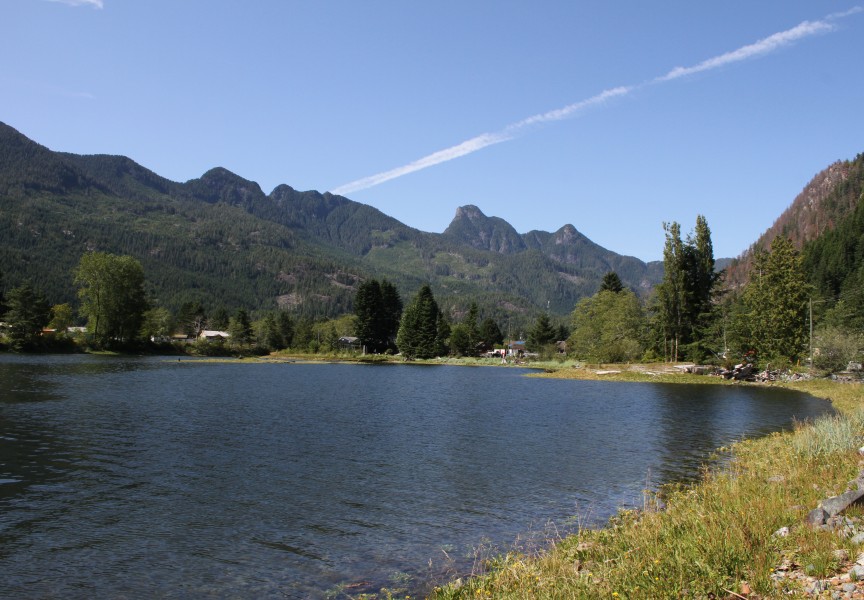The five Nuu-chah-nulth Nations that won the landmark First Nations commercial fishing rights case called Ahousaht Nation et al. vs. Canada are putting their brand on seafoods they are entitled now by Canadian law to catch and sell.
The T’aaq-wiihak has its own brand with its own marketing campaign and Web site http://www.haoom.ca/. It’s called Ha’oom Wild Seafood. Ha’oom offers fresh products and is creating sustainable livelihoods for people who respect the environment and who invest their earnings locally.
On Nov. 9, 2009, the B.C. Supreme Court affirmed the right of the Nuu-chah-nulth Nations, Ahousaht, Ehattesaht/Chinekint, Hesquiaht, Mowachaht/ Muchalaht, and Tla-o-qui-aht, to sell seafood harvested in their traditional territories. The decision was twice upheld in the B.C. Court of Appeal, and then again on Jan. 30 by the Supreme Court of Canada, which refused to hear the federal government’s appeal to the top court.
“That has paved the way for a rights-based commercial fishing industry,” said Alex Gagne, T’aaq-wiihak Fisheries Implementation Coordinator. “T'aaq-wiihak” refers to the permission granted by the Nuu-chah-nulth ha’wiih (hereditary chiefs).
“So far, we have seen a demonstration salmon fishery--this will be the third year--as well as a very limited lingcod and rockfish fishery last year, which we anticipate will happen again this year,” said Gagne. This year will also mark the first commercial harvest of gooseneck barnacles in many years.
Gagne said the program came about after talks with First Nations in Washington State, which won the right to commercially harvest salmon (and co-manage the stocks) under the landmark Boldt Decision of 1975.
“People from Makah said, ‘One of the things you’re going to have to do is marketing. There are going to be First Nations-run businesses and First Nations products, and you’re going to have to put yourselves out on the market as something different.’”
Based on that advice, T’aaq-wiihak secured funding from the B.C. Investment and Agriculture Foundation to develop a marketing strategy and materials.
“That’s how Ha’oom was born.”
To develop a brand and strategy, they turned to Goodforks, a consulting firm whose mission statement mirrors the aspirations adopted by Ha’oom. “We support a new sustainable food system and advocate savvy consumerism to create wealthier, healthier and happier communities,” reads Goodfork’s statement.
One of the initial goals was to identify the target markets. For salmon, the focus will be on local consumers. For goosenecks, however, the largest market is likely in Europe, where the tasty barnacles are a prized ingredient in tapas.
“They did a lot of research into who would be buying these products,” said Candace Picco, Uu-a-thluk Central Region biologist. “They found out it would be the top chefs and the top restaurants, and high-end, little specialty stores that like to sell sustainable things. The look of the Web site and the brand targets that audience.”
The Web site combines Nuu-chah-nulth design elements with a 21st century look and feel, “Keeping in mind the people who are going to be spending money on these products,” Picco explained.
The T’aaq-wiihak salmon fishery hearkens back to the days of the Mosquito Fleet, when Nuu-chah-nulth fishers took to the sea in what were basically sport boats, plus a few small trollers.
Those days are back, Picco said.
“Right now, it’s hook-and-line, with just a small number of gillnetters. You get a better looking fish with hook-and-line.”
The demonstration fishery focuses on chinook salmon so far.
“There are 100 people who are signed up for the fishery. Out of the hundred, last year we had 60 people participate.”
The buyers operate out of Zeballos and Tofino. Despite being a poor year for chinook salmon last year, the fishery, which targeted mostly U.S. “passing stocks,” brought in about $500,000 in revenue (not including expenditures). The 2014 season is expected to be much stronger.
For now, the T’aaq-wiihak fisheries are administered by Uu-a-thluk.
In spring 2015, the Nations go back to court on the justification issue, which was left unresolved during the 2009 court case. In the meantime, the Nations will continue their ongoing negotiations with DFO to define their access to all species.
“Eventually, they will set up a freestanding administration,” Picco said.






